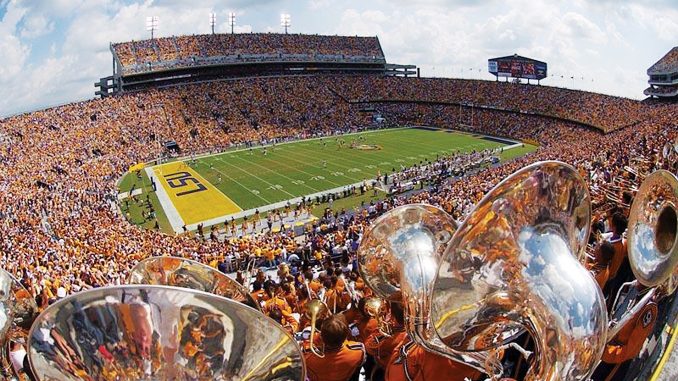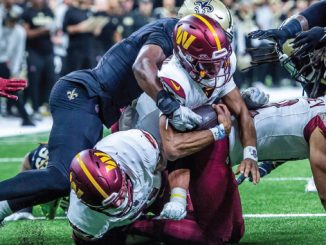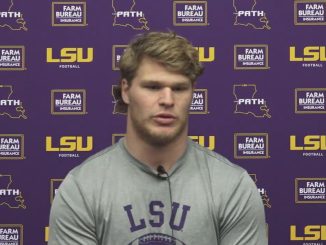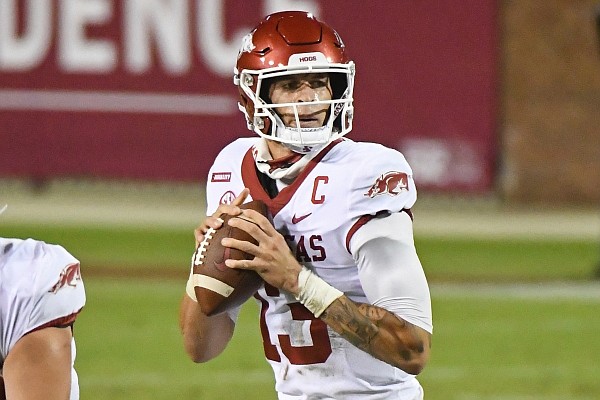
Beginning July 1, 2025, LSU — along with every other Power 5 program in the country — can and will directly compensate its athletes for the first time, thanks to Judge Claudia Wilken’s final approval of the House v. NCAA settlement on June 6. Under the new revenue-sharing model, each Division I school may distribute up to $20.5 million in direct payments to athletes during the 2025–26 academic year, with that cap rising incrementally through the settlement’s 10-year term. Those payments are on top of existing scholarships.
LSU’s announced plan so far mirrors the revenue breakdown embedded in the agreement: roughly $13.5 million for football, $2.7 million for men’s basketball, $900,000 for women’s basketball, $900,000 for all other sports combined and an additional $2.5 million earmarked for new scholarships. That allocation reflects LSU’s status as a revenue leader in the SEC and its intention to maximize football’s share, while still addressing roster-limit and Title IX requirements.
Roster limits replace traditional scholarship caps under the settlement. Football rosters are capped at 105 players; basketball at 15. But to avoid punishing current athletes, LSU — as an SEC member and defendant conference school — may grandfather in any athlete who would otherwise lose a spot. Those players won’t count against future roster limits at LSU or if they transfer elsewhere.
The settlement also provides nearly $2.8 billion in back payments to athletes who competed from 2016 to 2024, covering lost Name, Image and Likeness (NIL) and other compensation. Approximately 40 percent of that fund—some $1.12 billion — flows to former Power 5 athletes. LSU’s former and current athletes will receive their share over a 10-year period, according to formulas that favor football and men’s basketball.
To police booster-driven NIL deals and enforce “fair market value,” the settlement creates a clearinghouse called NIL Go, operated by Deloitte in partnership with the five power conferences. Any NIL agreement exceeding $600 must be submitted for review. Deals deemed in excess of fair market value can be flagged, cleared or sent to neutral arbitration. LSU’s compliance office will integrate NIL Go into its existing processes, preventing boosters from privately funneling six-figure deals to star players outside the school’s revenue-sharing plan.
The College Sports Commission — overseen by power-conference appointees and led by incoming CEO Bryan Seeley, formerly MLB’s executive VP for legal and operations — will implement these rules. LSU, as an SEC institution, is automatically bound by them; non-defendant schools have until June 15 to opt in if they wish to pay athletes directly (and accept the settlement’s roster and reporting requirements).
Several open questions remain for LSU and its peers. How will Title IX gender-equity mandates apply to direct pay? Will the annual cap on spending and roster limits withstand further legal challenges? And how will LSU’s athletic department balance its revenue commitments across Olympic sports that generate far less income?
Internally, LSU has begun adjusting budgets and schedules to accommodate direct payments. Some nonrevenue teams at other schools similar in size to LSU have already faced cuts in anticipation of tighter financial controls.
LSU Senior Associate Athletic Director for External Affairs/Chief Communications Officer Zach Greenwell said on Monday that LSU will be releasing more detail on its specific revenue sharing plan for 2025-26 within the next two weeks.
Recent public statements from Athletic Director Scott Woodward emphasize a commitment to competitive balance: football remains the priority, but men’s and women’s Olympic sports will see defined — even if smaller — portions of the $20.5 million pool.
The NCAA continues to lobby Congress for antitrust protection and to preempt state laws that could classify athletes as employees. Meanwhile, another case, Johnson v. NCAA, explores whether athletes qualify as employees under the Fair Labor Standards Act. Judge Wilken noted in her 76-page opinion that Title IX and employment status lie beyond her current mandate—and that athletes retain the right to sue over roster limits, caps and equity issues going forward.
For LSU and the other Power 5 schools, the House settlement signals the end of traditional amateurism. Between the $20.5 million spending cap, the Deloitte-run NIL oversight system and the promise of back payments, next season’s budgets and rosters will look markedly different. As one of the the SEC’s financial juggernauts, LSU is poised to lead in leveraging these changes — but also to navigate the complex regulatory and legal questions still ahead.




Be the first to comment